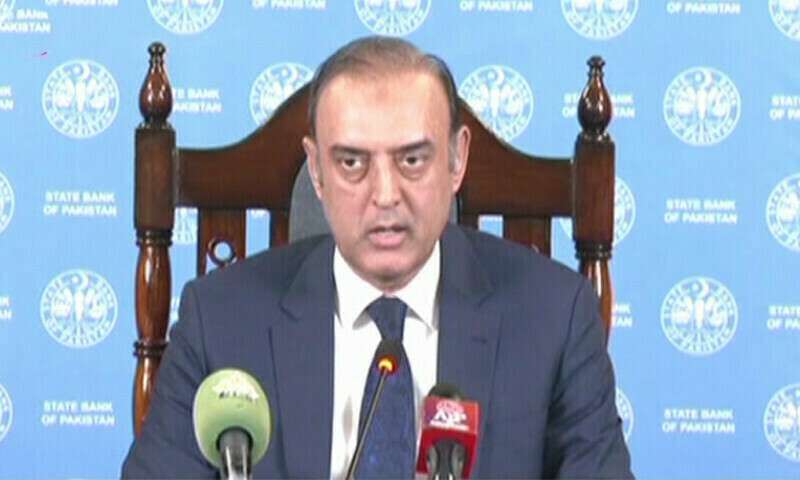Introduction to the SBP Interest Rate Cut
On Monday, the State Bank of Pakistan (SBP) made a significant move in its monetary policy by announcing a reduction in its key policy rate by 100 basis points (bps), dropping it from 13% to 12%. This decision, coming amid widespread expectations for a more substantial rate cut, is part of a series of rate reductions that have been implemented by the central bank in recent months. The policy rate, after being reduced by a total of 1,000bps since June 2024, now stands at 12%.
The decision, announced by SBP Governor Jameel Ahmed during a press conference, was made after careful consideration of the prevailing inflation outlook and various economic developments. It reflects the SBP’s ongoing efforts to stabilize the economy, manage inflation, and foster sustainable growth.
The Monetary Policy Committee’s (MPC) Decision
The policy rate reduction was made during the latest meeting of the Monetary Policy Committee (MPC), which carefully evaluated the prevailing economic conditions. The MPC emphasized several key factors that influenced the decision to cut the policy rate. These factors include inflation trends, remittance flows, export numbers, and foreign exchange reserves, which collectively contribute to the outlook for price stability and overall economic health.
Inflation Outlook and Core Inflation Concerns
One of the primary reasons behind the SBP’s decision to reduce the policy rate was the positive trend in inflation. The SBP noted that inflation had continued to trend downward in line with expectations, reaching 4.1% year-on-year (y/y) in December. This decline was largely driven by moderate domestic demand conditions and favorable supply-side dynamics, with the added benefit of a favorable base effect.
However, despite these positive trends, the SBP remains cautious about core inflation, which continues to remain elevated. Core inflation, which excludes volatile food and energy prices, remains a critical concern for the central bank. As such, the SBP has taken a careful approach to monetary policy, prioritizing price stability while maintaining flexibility to adjust as conditions evolve.
Economic Activity and Key Developments
In addition to inflation, the MPC also evaluated other significant economic indicators, including real GDP growth, the current account balance, and fiscal performance.
- Real GDP Growth:
The real GDP growth rate turned out to be lower than the MPC’s expectations. While the global economy faces various challenges, the pace of economic growth in Pakistan has been slower than anticipated. This slower-than-expected growth has been a factor in the SBP’s cautious stance. - Current Account Surplus:
The current account balance remained in surplus in December 2024, which is a positive sign for Pakistan’s external sector. The surplus reflects an increase in remittances and a favorable export performance. However, the SBP highlighted that foreign exchange (FX) reserves had declined during the same period, primarily due to low financial inflows and high debt repayments. - Tax Revenue Performance:
Tax revenues in December exhibited a substantial increase compared to previous months. However, despite the increase, tax revenues were still below the government’s target, signaling the need for continued fiscal reforms. - Global Oil Prices:
Another external factor that the MPC considered in its decision was the volatility in global oil prices. Oil price fluctuations can have a significant impact on Pakistan’s trade balance and inflation, making it a critical component of the monetary policy decision-making process.
The SBP’s Outlook for FX Reserves
The SBP’s Governor, Jameel Ahmed, also addressed the central bank’s outlook for foreign exchange reserves. The SBP remains confident in its ability to achieve its goal of reaching $13 billion in FX reserves by the end of June 2025. The positive trends in remittances and exports, along with the cautious approach to monetary policy, are expected to contribute to this goal.
The SBP’s efforts to bolster its FX reserves are crucial in maintaining stability in the foreign exchange market and ensuring that Pakistan has the necessary buffers to absorb external shocks.
Impact of T-bill Yields and Government Fiscal Measures
The recent reduction in the cut-off yields on treasury bills (T-bills) has been another indicator of the likelihood of further interest rate cuts in the near future. The government slashed the return on a 12-month tenor by 41bps, reducing it to 11.38%. This reduction, combined with the overall 90bps cut in T-bill rates this month, suggests that there may be more rate cuts to come in the coming months.
The government’s fiscal policies, including efforts to meet tax revenue targets and manage its debt obligations, will play a key role in shaping the broader economic environment in which the SBP operates.
Why Did the SBP Cut the Key Policy Rate?
The SBP’s decision to cut the key policy rate was based on several interrelated factors. The primary motivation was the positive inflation outlook, which has been supported by moderate domestic demand and favorable supply-side conditions. However, the SBP also took into account the elevated core inflation and other external risks, such as global oil price volatility and fluctuations in the financial inflows and FX reserves.
The reduction in the policy rate is seen as a cautious yet necessary step to support economic growth while maintaining price stability.
The Future of Pakistan’s Monetary Policy
Looking ahead, the SBP will continue to closely monitor inflation, economic activity, and external developments. The central bank has emphasized that it will adopt a cautious approach to monetary policy, ensuring that any future rate cuts are aligned with the broader goal of price stability.
With inflation expected to decline further in January before potentially rising in the months ahead, the SBP is likely to remain vigilant in its approach, ready to adjust its policy stance as needed to ensure sustainable growth.
FAQs on SBP’s Interest Rate Cut
- What prompted the SBP to reduce the key policy rate?
The decision was influenced by the positive trend in inflation, the improvement in remittances, and favorable export numbers, as well as a cautious approach to managing core inflation. - What is the current policy rate of the SBP?
The SBP’s key policy rate was reduced to 12% from 13%, marking a 100bps cut in the latest meeting of the Monetary Policy Committee. - How does core inflation affect the SBP’s decision-making?
Core inflation remains a concern for the SBP, as it excludes volatile food and energy prices. The central bank takes this into account to ensure price stability in the long term. - What is the outlook for foreign exchange reserves?
The SBP is optimistic about achieving its target of $13 billion in FX reserves by the end of June 2025, driven by the positive trends in remittances and exports. - How have global oil prices influenced the SBP’s decisions?
Global oil price volatility has been a critical factor in shaping the SBP’s monetary policy decisions, as fluctuations in oil prices can affect inflation and the trade balance.
Conclusion
The SBP’s decision to reduce the key policy rate by 100bps to 12% highlights its cautious yet pragmatic approach to managing inflation and economic growth in Pakistan. The move is aimed at fostering stability in the face of ongoing challenges, including elevated core inflation and external risks. While the rate cut is a positive development, the SBP remains vigilant in monitoring key economic indicators and adjusting its policy stance as necessary.



